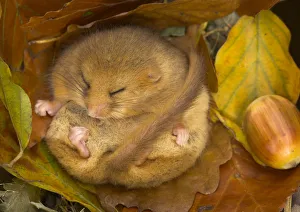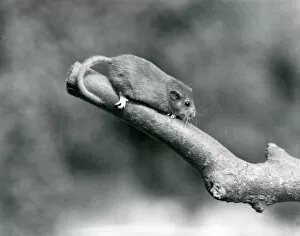Muscardinus Collection
The muscardinus, also known as the Hazel Dormouse (Muscardinus avellanarius), is a small and adorable creature that captures our hearts
All Professionally Made to Order for Quick Shipping
The muscardinus, also known as the Hazel Dormouse (Muscardinus avellanarius), is a small and adorable creature that captures our hearts. In this captivating photo, we see one of these delightful dormice hibernating amongst leaves and acorns. Its tiny body curled up in a cozy nest showcases its incredible adaptation to survive the cold winter months. Another image displays a colored photograph of this charming dormouse, Muscardinus avellanarius. Its fur appears soft and luscious, making it even more irresistible. The intricate details of its features are brought to life through vibrant hues, allowing us to appreciate its beauty. Transporting us back in time is a black and white photo taken at London Zoo in 1929. Perched on a branch is a Hazel/Common Dormouse showcasing its agility and gracefulness. This snapshot from history reminds us of the enduring fascination humans have had with these enchanting creatures for generations. In another depiction, we witness an Egyptian jerboa alongside Syrian jerboa, dormouse, and tamarisk plants - all elements harmoniously coexisting within their natural habitat. This serves as a reminder of the interconnectedness between different species within ecosystems. A hibernating rodent captured in British Quadrupeds highlights the common dormouse's ability to adapt during harsh winters by entering into deep slumber until spring arrives once again. It amazes us how nature has equipped these animals with such remarkable survival strategies. Repeating images further emphasize the prevalence and significance avellanarius within our world today – reminding us that they are not just ordinary creatures but rather extraordinary beings deserving our admiration and protection. Through these glimpses into their lives, we gain insight into the mysterious world of dormice while simultaneously appreciating their undeniable charm. Let's continue cherishing these wonderful creatures who bring joy wherever they go - whether nestled among leaves or gracefully perched on branches.









